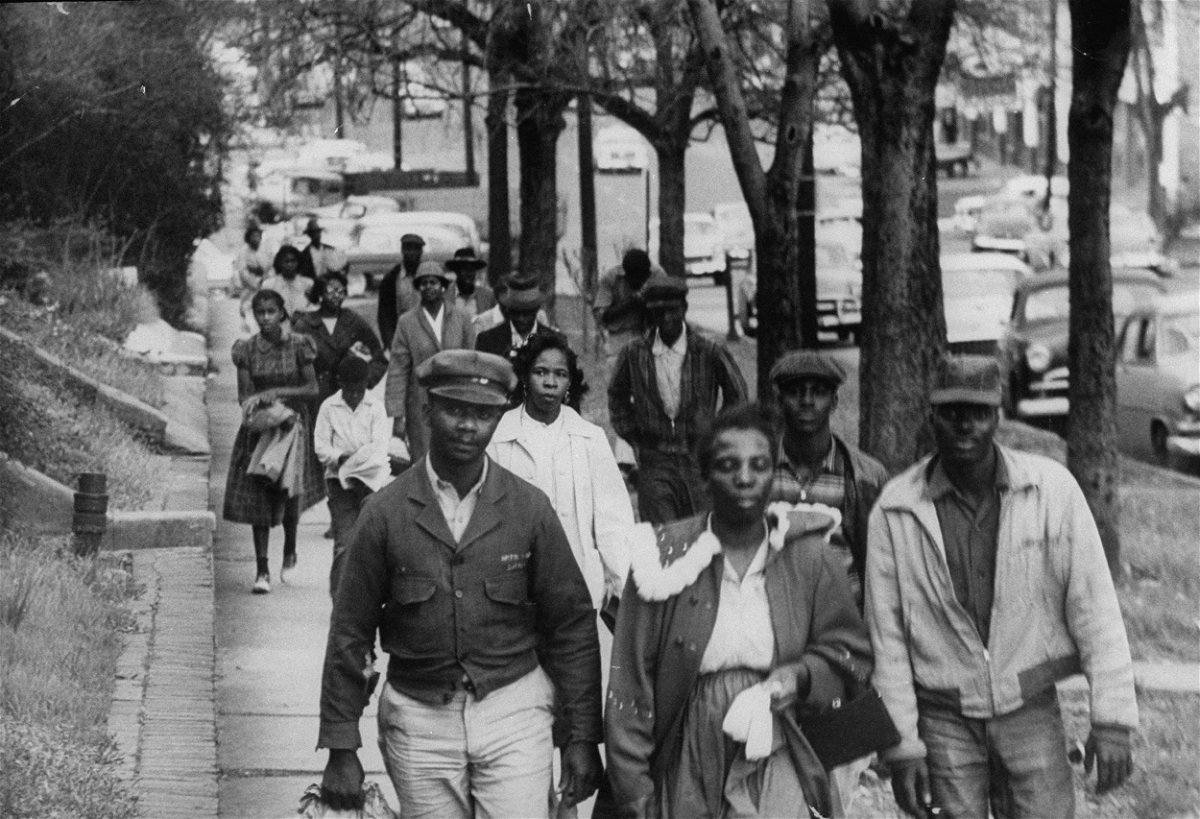Alabama brawl turns spotlight on Montgomery’s racial history

The annual sale and hiring of slaves at Montgomery
By Nicquel Terry Ellis and Chandelis Duster, CNN
(CNN) — Viral video of a chaotic brawl along Montgomery, Alabama’s riverfront has renewed national conversations about racial tensions in America.
A fight between a group of White boaters and a Black co-captain of a riverboat escalated into a melee Saturday when a group of bystanders joined the fray.
On Tuesday, Montgomery, Alabama, Police Chief Darryl Albert said arrest warrants had been issued for three men involved in the altercation.
Investigators looked into whether there was enough evidence to charge for a hate crime or inciting a riot, but the actions did not meet the criteria, he said.
“We are unable to present any inciting a riot or racially biased charges at this time,” Albert said during a news conference.
But that news hasn’t stopped some from speculating about the motivations behind a fight that appeared bitterly divided along racial lines.
In a sworn statement to police, a witness alleged that a racial slur was used before the brawl began.
On social media, images from the brawl quickly became a meme, as some viewers praised the Black bystanders who rushed – and swam – to the co-captain’s defense.
But jokes and memes aside, historians have noted that the altercation has once again placed Montgomery at the center of conversations around race. Here’s a look at Montgomery’s storied racial history.
Montgomery played a central role in the slave trade
In downtown Montgomery, not far from where the brawl took place, a historic marker commemorates the city’s role in the trans-Atlantic slave trade.
Joshua D. Rothman, a historian and chair of the Department of History at the University of Alabama, told CNN the state played a “substantial role in the domestic slave trade” until the Civil War.
In the mid-1800s, thousands of enslaved people were transported on steamboats and railroads from New Orleans up the Alabama River to Montgomery, according to the Montgomery-based Equal Justice Initiative. Many of the rail routes had been constructed by slave labor.
Enslaved people would arrive on Montgomery’s riverfront or at the train station where they would be chained together and paraded down Commerce Street. They would later be sold in the city’s slave markets.
By 1860, there were more than 435,000 enslaved people in the state, according to the Equal Justice Initiative. By the start of the Civil War a year later, Montgomery was among the most prominent slave trading communities in the state.
“Slavery’s impact could be seen in everything,” Rothman said in an email to CNN. He added that enslaved labor fueled the local economy and influenced everything from the political order to religious life.
“If you scratch hard enough at the surface of any of those matters (and many others) today, you’ll likely find the legacy of slavery lying somewhere underneath.”
It was once the capital of the Confederacy
Montgomery is often called the “Cradle of the Confederacy” because in 1861 it briefly served as the first capital of the Confederate States of America. Eleven states had seceded from the union after Abraham Lincoln was elected president of the US in 1860.
Delegates from six of those states – South Carolina, Mississippi, Alabama, Florida, Georgia and Louisiana – convened in Montgomery in February 1861 to officially establish their own government. In May 1861, the Confederate government moved from Montgomery to Richmond, Virginia, which remained the capital of the Confederacy until the end of the Civil War.
The birthplace of the Civil Rights Movement
Montgomery was ground zero for protests during the Civil Rights Movement. The Montgomery Bus Boycott drew national attention because it was the first major protest against segregation.
The boycott started after Rosa Parks was arrested in Montgomery for refusing to give up her bus seat to a White man on December 1, 1955. At the time, Alabama law required Black people to give up their seats to White people if the bus was full. In response to Parks’ arrest, Black Americans refused to ride the city buses in an effort to force an end to segregated seating. In November of 1956, the US Supreme Court struck down laws that mandated segregated seating on buses.
Montgomery also played a pivotal role in the Selma March. On March 7, 1965, hundreds of people marched from Selma, Alabama, to Montgomery to demonstrate the fight for equal voting rights for Black Americans. But on the Edmund Pettus Bridge in Selma, the march turned violent when state troopers attacked the marchers, leaving many injured. The protest, later dubbed “Bloody Sunday,” sparked national outrage and ultimately led to the passage of the Voting Rights Act in August 1965.
Montgomery today
In April 2018, the National Memorial for Peace and Justice, a museum honoring lynching victims and the enslaved, was opened in Montgomery. It stands as a solemn reminder of the horrors of slavery in the city. The EJI’s Legacy Museum is located on the site of a former warehouse where Black people were bought and sold into slavery.
In 2019, 54 years after Bloody Sunday, Montgomery elected its first Black Mayor Steven Reed.
The-CNN-Wire
™ & © 2023 Cable News Network, Inc., a Warner Bros. Discovery Company. All rights reserved.


